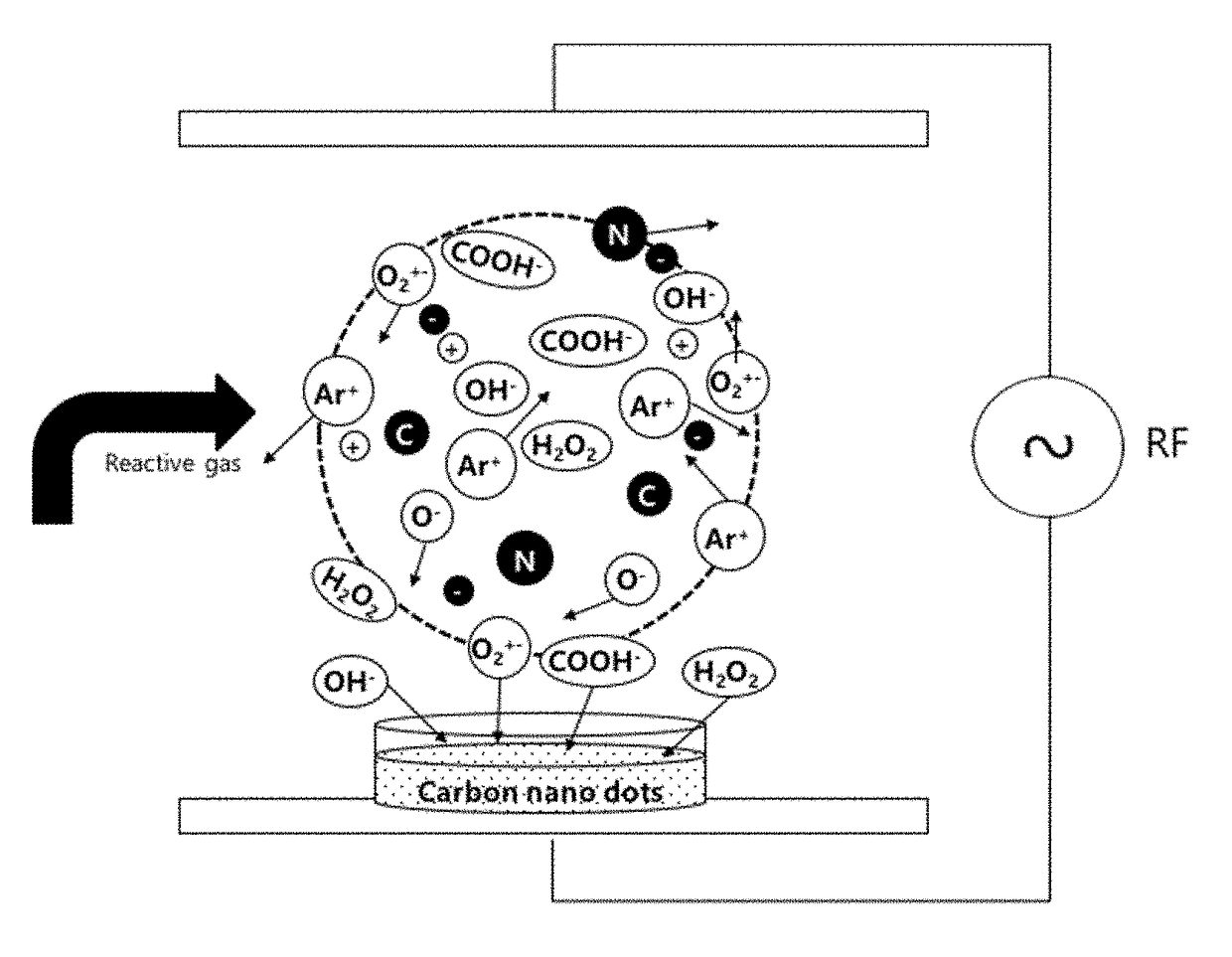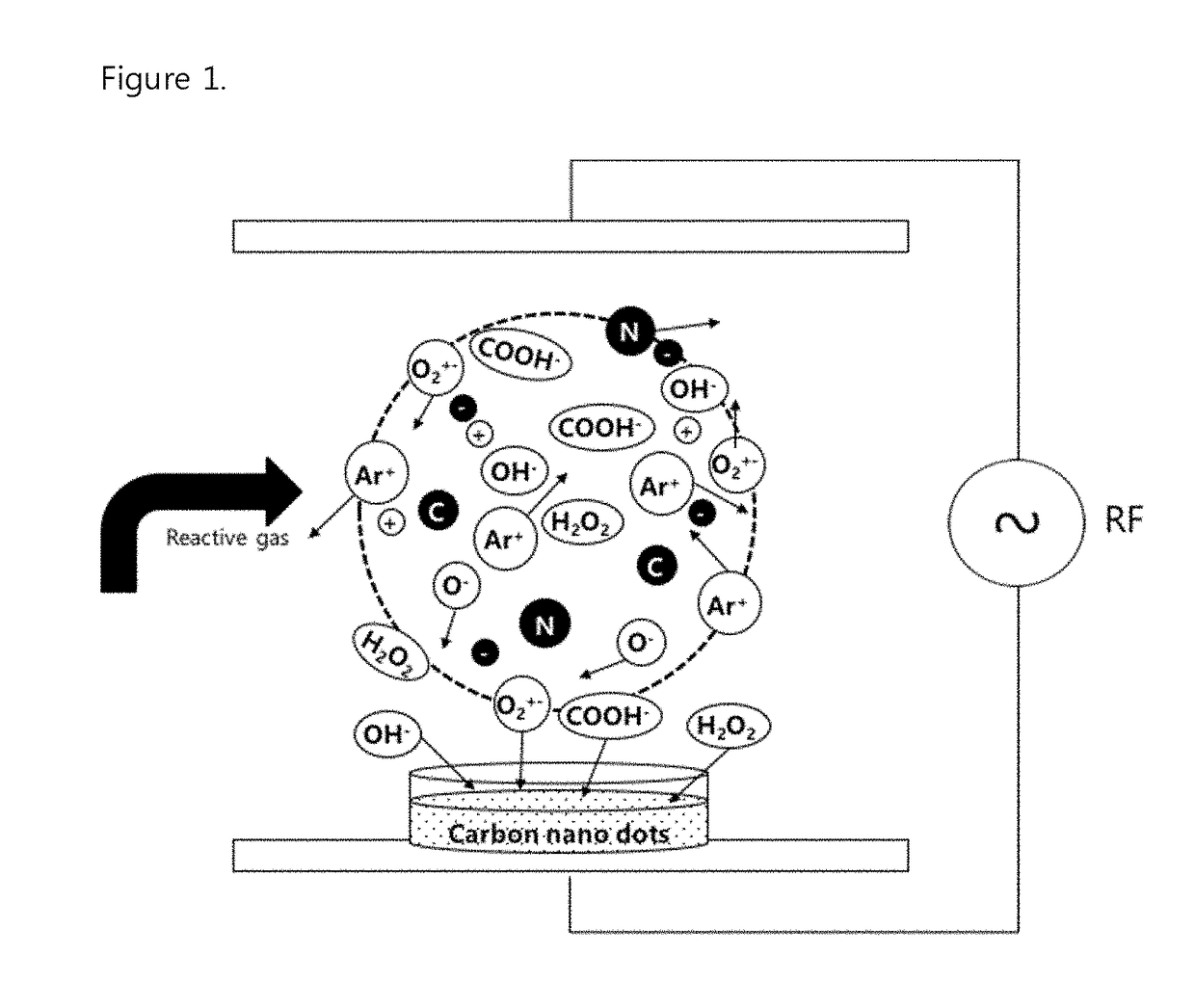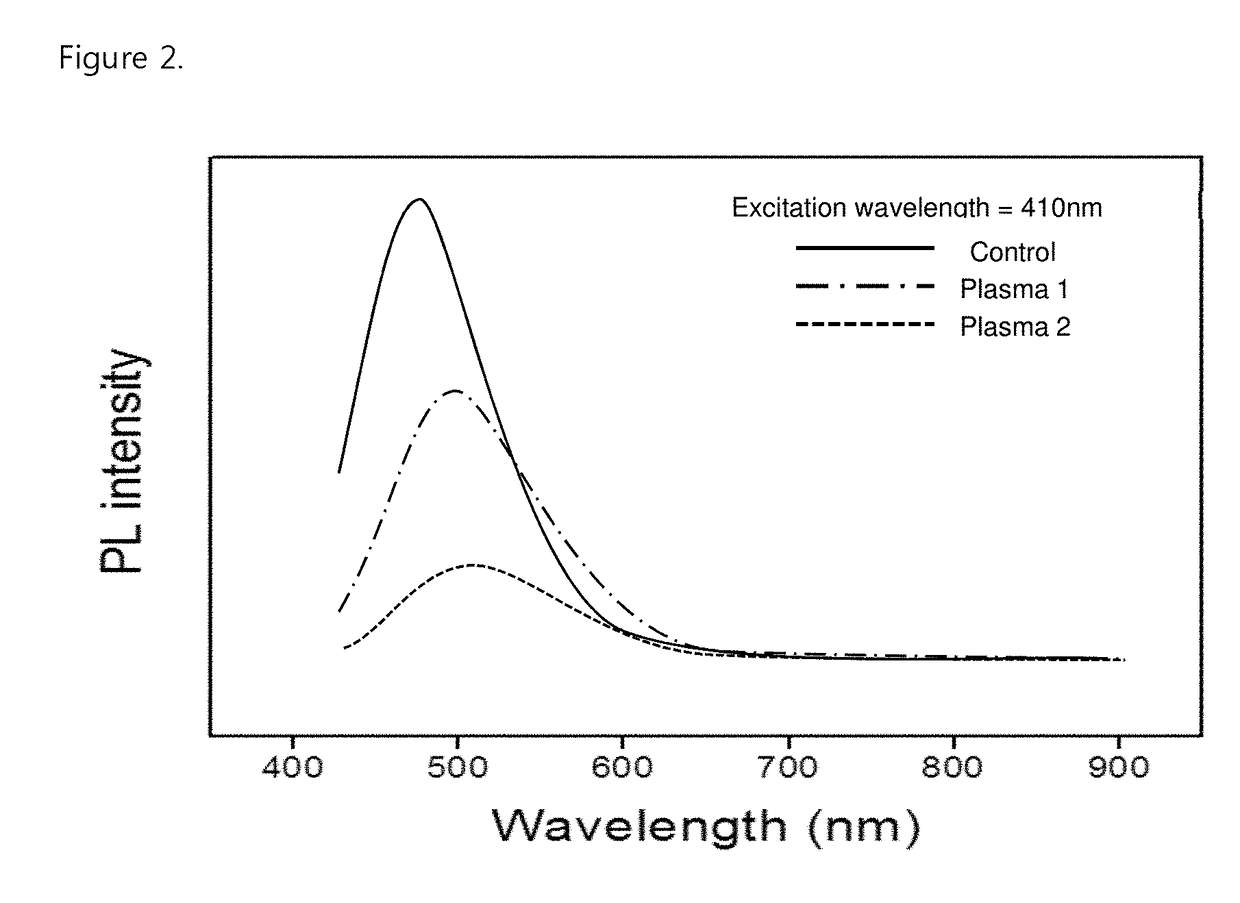Photoluminescent carbon nanoparticles and method of preparing the same
- Summary
- Abstract
- Description
- Claims
- Application Information
AI Technical Summary
Benefits of technology
Problems solved by technology
Method used
Image
Examples
example 1
on of Photoluminescent Carbon Nanoparticles
[0053]Preparation of Carbon Nanodots
[0054]A food waste sample as an organic waste was vacuum-filtered by using a filter paper and then further filtered by using a membrane filter with a size of 0.22 μm. The solid food waste was added with water as a solvent in a volume ratio of 1:10 to be prepared in a liquid state. The liquid food waste sample was irradiated with a ultrasound of 8 kHz at a temperature of 50° C. for 100 minutes to prepare liquid carbon nanodots as a free dispersion of fluorescent carbon quantum dots in water.
[0055]Plasma Treatment
[0056]The plasma treatment was performed by using a plasma treating system (Covance-MP; Femto-Science Co., Korea) including a 13.56 MHz RF generator (up to 300 W), electrodes, dielectric materials, a ceramic substrate, a diffuser, a sample stage, gas inlet / outlet, and a vacuum system. The liquid carbon nanodots were put in an open container, e.g., a dish, and placed on the sample stage adjusted to ...
example 2
on of Photoluminescent Carbon Nanoparticles
[0057]Except for using Ar (50 sccm) and H2 (50 sccm) as reactive gas during the plasma treatment in Example 1, Example 2 was performed the same as Example 1 to prepare the photoluminescent carbon nanoparticles.
example 3
on of Photoluminescent Carbon Nanoparticles
[0058]Except for using Ar (50 sccm) and N2 (50 sccm) as the reactive gas during the plasma treatment in Example 1, Example 3 was performed the same as Example 1 to prepare the photoluminescent carbon nanoparticles.
PUM
 Login to View More
Login to View More Abstract
Description
Claims
Application Information
 Login to View More
Login to View More - R&D
- Intellectual Property
- Life Sciences
- Materials
- Tech Scout
- Unparalleled Data Quality
- Higher Quality Content
- 60% Fewer Hallucinations
Browse by: Latest US Patents, China's latest patents, Technical Efficacy Thesaurus, Application Domain, Technology Topic, Popular Technical Reports.
© 2025 PatSnap. All rights reserved.Legal|Privacy policy|Modern Slavery Act Transparency Statement|Sitemap|About US| Contact US: help@patsnap.com



